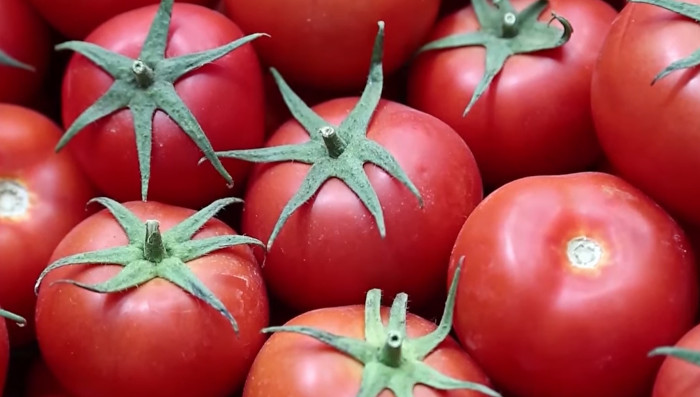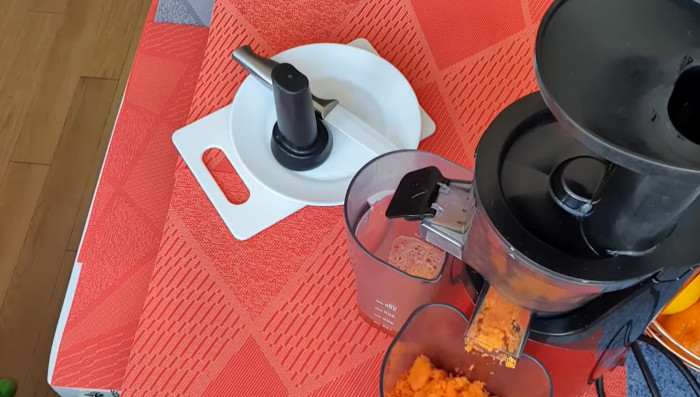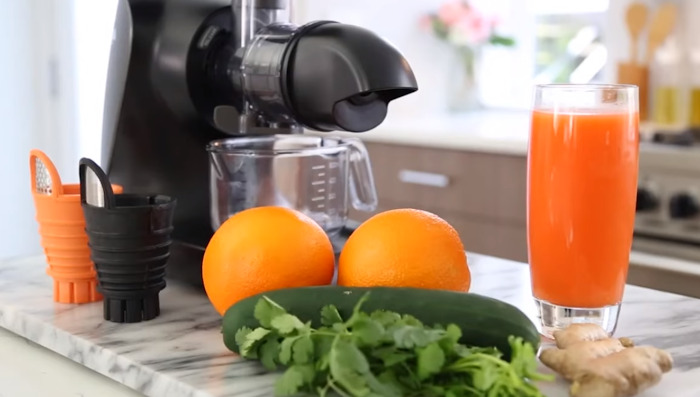Welcome to the world of homemade tomato vegetable juice! In this article, we’ll dive into the art of crafting your own refreshing and flavorful tomato-based drink. Whether you’re a seasoned juice enthusiast or a newbie looking to explore the world of homemade beverages, you’re in for a treat.
As we embark on this juicing journey, we’ll uncover the versatility of tomato vegetable juice. From selecting the freshest ingredients to customizing your blend to suit your taste buds, we’ll cover it all. Get ready to discover the secrets behind creating a cold glass of sunshine and warmth in a jar.
Throughout this article, we’ll draw upon the wisdom of expert chefs, explore the rich history of tomato juice, and delve into the health benefits of this delightful concoction. So, grab your juicer, don your apron, and let’s embark on a flavorful adventure into the world of homemade tomato vegetable juice.
How to create a tomato veggie juice ?
Ingredients:
Here’s a precise list of what you’ll need to whip up this refreshing concoction:
- 10 lbs of tomatoes (any variety works)

- 3–5 ribs of celery
- 2 carrots
- 1–2 onions
- 8 garlic cloves
- 1/2 – 1 Tablespoon black peppercorns
- 2 bay leaves (fresh or dry)
- 1 Tablespoon granulated sugar
- 1 Tablespoon salt
- 1/4 cup lemon juice (for freshness and canning safety)
- Optional additions: beets, bell peppers, hot peppers, parsnips, and fresh herbs like parsley, basil, thyme, and rosemary.
Equipment:
Here’s a handy list of equipment you’ll need:
- Large Stockpot: A spacious pot is essential for cooking down your vegetables and creating the base for your juice.
- Cutting Tools: You’ll need knives and cutting boards for slicing and dicing your tomatoes, celery, carrots, onions, and garlic.
- Potato Masher or Immersion Blender: To mash up the cooked vegetables and extract maximum juice.
- Fine Mesh Sieve: This is for straining your tomato juice, separating it from the vegetable solids.

- Canning Jars and Lids: If you plan to store your juice long-term, you’ll need sterilized canning jars and lids.
- Oven or Dishwasher: To sterilize your jars and lids properly.
- Blender: If you’re blending in fresh herbs or other ingredients, a blender can be helpful.
- Large Spoon: For stirring and handling the cooking process.
- Boiling Water Bath: This is used for canning your tomato juice if you want to extend its shelf life.
- Towels: Placing a towel at the bottom of the pot during boiling helps prevent the jars from direct contact with the pot.
Directions:
Here are the step-by-step instructions to guide you through the journey:
1.Prep the Vegetables: Start by preparing your ingredients. Cut the tomatoes into halves or quarters. Slice the celery into 3-4 pieces, thinly slice the carrots, peel and quarter the onion, and peel the garlic. While you don’t have to cut the tomatoes, it helps them cook faster.

2.Cook the Vegetables: Place all the prepared vegetables, except the lemon juice, in a large stockpot. Bring the mixture to a boil, then reduce the heat to a simmer. Allow it to cook for about 30-45 minutes until all the vegetables become soft. If you’ve added beets and carrots, they might need a bit more cooking time.
3.Mash the Vegetables: Use a potato masher or an immersion blender to mash the cooked vegetables. This process extracts more juice and speeds up the straining. Alternatively, you can use a food mill if you have one.
4.Add Lemon Juice: Pour in the lemon juice. This helps ensure the acidity level is safe for canning without altering the flavor significantly.
5.Strain the Juice: Pass the tomato mixture through a fine mesh sieve, pressing on the vegetable solids to extract as much juice as possible. Taste the juice and adjust salt and sugar if needed.
6.Store or Can: If you plan to use the juice within 1-2 weeks, simply store it in the refrigerator. For longer storage, sterilize canning jars and lids. Pour the strained juice into sterilized jars, leaving about 1/2″ of space at the top. Wipe the rims, seal with lids, and place sealed jars in a boiling water bath for around 10 minutes. Ensure a towel separates the jars from the pot. Afterward, cool the jars completely.
7.Enjoy: Your homemade tomato vegetable juice is ready to enjoy. Pull a cold jar from the refrigerator whenever you crave the unbeatable flavor of your homemade creation.
Health benefits of tomato veggie juice:
Here’s a quick rundown of why incorporating this juice into your diet can be a smart choice:
- Rich in Antioxidants: Tomato veggie juice is brimming with antioxidants like vitamin C, vitamin A, and lycopene. These compounds help combat free radicals in the body, reducing the risk of chronic diseases.
- Heart Health: The combination of potassium and folate in this juice can contribute to heart health by helping to regulate blood pressure and reducing the risk of heart disease.

- Weight Management: Low in calories and high in fiber, this juice can help you feel fuller for longer, making it a great addition to a weight management plan.
- Cancer Prevention: Lycopene, a prominent antioxidant in tomatoes, is associated with a reduced risk of certain cancers, particularly prostate cancer.
- Eye Health: The vitamin A content is beneficial for maintaining good eyesight and may reduce the risk of age-related eye diseases.
- Skin Benefits: The vitamins and antioxidants in tomato veggie juice can promote healthy, radiant skin by protecting it from UV damage and signs of aging.
- Digestive Health: The fiber content aids in digestion and can help prevent constipation.
- Hydration: It’s a delicious way to stay hydrated, especially in hot weather.
- Bone Health: Rich in vitamin K and calcium, it supports strong and healthy bones.
- Reduction in Inflammation: Some studies suggest that the anti-inflammatory properties of tomato veggie juice may help alleviate symptoms of inflammatory conditions.
Experts Tips:
Certainly, here are some expert tips to make the most of tomato juice:
1. Start Your Day Right: Consider incorporating tomato juice into your morning routine. It’s a refreshing and nutritious way to kickstart your day, providing essential vitamins and hydration.
2. Mix with Other Juices: Experiment with mixing tomato juice with other vegetable juices like carrot, cucumber, or spinach. This not only enhances the flavor but also boosts the nutritional value.
3. Portion Control: While tomato juice can be beneficial, remember that moderation is key. Stick to recommended serving sizes to avoid excessive calorie intake.
4. Spice It Up: Add a dash of hot sauce or a sprinkle of black pepper to your tomato juice. Spices can not only enhance the taste but also slightly rev up your metabolism.
5. DIY Tomato Juice: Consider making your own tomato juice at home. This way, you can ensure it’s free from additives and preservatives.
6. Pre or Post-Workout: Tomato juice can be a good choice before or after your workout. It provides essential nutrients and hydration to support your exercise routine.
7. Include It in Recipes: Get creative by using tomato juice as a base for soups, stews, and even salad dressings. It can add a burst of flavor and nutrition to your dishes.
8. Stay Hydrated: Remember that tomato juice, while nutritious, should not replace your regular water intake. Staying adequately hydrated is essential for overall health.
9. Choose Low-Sodium Varieties: If you’re watching your sodium intake, opt for low-sodium or salt-free tomato juice options available in the market.
10. Listen to Your Body: Everyone’s dietary needs are different. Pay attention to how your body responds to tomato juice, and adjust your consumption accordingly.
Wrapping up:
In conclusion, tomato vegetable juice offers a plethora of health benefits. Its rich blend of vitamins, minerals, and antioxidants makes it a fantastic addition to your daily diet. The combination of tomatoes, carrots, celery, and other veggies creates a powerhouse of nutrients that can support your overall well-being.
By following the expert tips provided earlier, you can make the most of tomato juice, whether you’re looking to boost your immune system, improve digestion, or even shed a few pounds. Remember to listen to your body, stay hydrated, and enjoy the versatile flavors of this nutritious beverage.
Incorporating tomato vegetable juice into your routine can be a simple yet effective way to promote a healthier lifestyle. So, why not raise a glass to your health and savor the delicious taste of this revitalizing drink? Cheers to your well-being!
FAQs:
Can this tomato juice be canned?
Yes, you can definitely can tomato vegetable juice. Canning is a great way to preserve the freshness and nutrients of the juice for a longer period. To do this, you’ll need to follow proper canning procedures and use sterilized containers to ensure safety and quality. By canning your homemade tomato vegetable juice, you can enjoy its benefits even when tomatoes are out of season, making it a convenient and nutritious addition to your pantry.
What does this juice taste like?
Tomato vegetable juice has a unique and robust flavor profile. It primarily tastes like ripe tomatoes with a pleasant combination of sweetness and tanginess. The added vegetables, such as carrots, celery, and red bell peppers, contribute earthy and slightly sweet notes, enhancing the overall taste. The garlic and fresh parsley provide subtle undertones of savory and herbaceous flavors. It’s a well-balanced juice that’s both refreshing and nutritious, making it a delightful beverage choice for those who enjoy the taste of fresh, garden-grown vegetables in liquid form.
How sweet is this juice?
The sweetness of this juice is pleasantly mild, as it primarily relies on the natural sugars found in ripe tomatoes and the other vegetables. It’s not overly sweet like fruit juices but instead offers a more subtle and balanced sweetness. The addition of carrots, celery, and red bell peppers contributes to a nuanced flavor profile that combines the sweetness of vegetables with a touch of earthiness and a hint of savory notes from garlic and fresh parsley. Overall, it’s a refreshing and mildly sweet beverage that appeals to those who prefer a more natural taste.
Related Read: Recipe Of Homemade V8 Juice!







